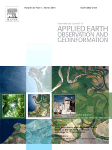A new research paper entitled “An assessment of a collaborative mapping approach for exploring land use patterns for several European metropolises” has been published in International Journal of Applied Earth Observation and Geoinformation.
Abstract: Until recently, land surveys and digital interpretation of remotely sensed imagery have been used to generate land use inventories. These techniques however, are often cumbersome and costly, allocating large amounts of technical and temporal costs. The technological advances of web 2.0 have brought a wide array of technological achievements, stimulating the participatory role in collaborative and crowd sourced mapping products. This has been fostered by GPS-enabled devices, and accessible tools that enable visual interpretation of high resolution satellite images/air photos provided in collaborative mapping projects. Such technologies offer an integrative approach to geography by means of promoting public participation and allowing accurate assessment and classification of land use as well as geographical features. OpenStreetMap (OSM) has supported the evolution of such techniques, contributing to the existence of a large inventory of spatial land use information. This paper explores the introduction of this novel participatory phenomenon for land use classification in Europe’s metropolitan regions. We adopt a positivistic approach to assess comparatively the accuracy of these contributions of OSM for land use classifications in seven large European metropolitan regions. Thematic accuracy and degree of completeness of OSM data was compared to available Global Monitoring for Environment and Security Urban Atlas (GMESUA) datasets for the chosen metropolises. We further extend our findings of land use within a novel framework for geography, justifying that volunteered geographic information (VGI) sources are of great benefit for land use mapping depending on location and degree of VGI dynamism and offer a great alternative to traditional mapping techniques for metropolitan regions throughout Europe. Evaluation of several land use types at the local level suggests that a number of OSM classes are viable alternatives for land use classification. These classes are highly accurate and can be integrated into planning decisions for stakeholders and policymakers.
 Further reading: Jokar Arsanjani, J. & Vaz, E. (2015): An assessment of a collaborative mapping approach for exploring land use patterns for several European metropolises. International Journal of Applied Earth Observation and Geoinformation. Vol(35), Part B, p.p. 329–337. DOI: 10.1016/j.jag.2014.09.009
Further reading: Jokar Arsanjani, J. & Vaz, E. (2015): An assessment of a collaborative mapping approach for exploring land use patterns for several European metropolises. International Journal of Applied Earth Observation and Geoinformation. Vol(35), Part B, p.p. 329–337. DOI: 10.1016/j.jag.2014.09.009


